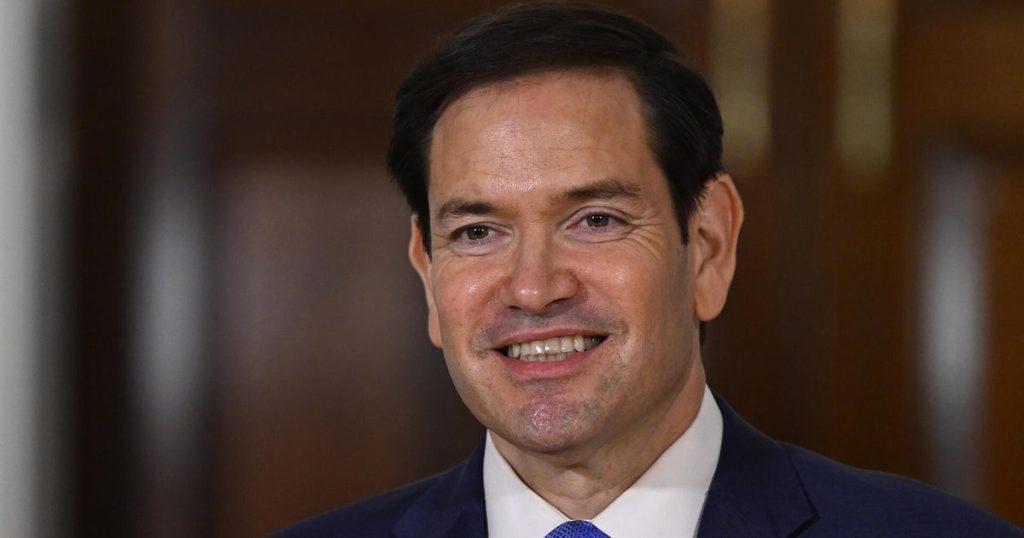The State Department is set to initiate significant layoffs as part of a major restructuring effort aimed at reducing its U.S. workforce by approximately 15%. This strategic move, part of the administration’s broader realignment plan, will involve both involuntary layoffs and voluntary departures through buyouts. Despite the anticipated reductions, cuts to overseas staff are currently not on the agenda, raising concerns among critics about the potential impacts on the department’s effectiveness.
| Article Subheadings |
|---|
| 1) Scope and Impact of Layoffs |
| 2) Rationale Behind the Restructuring |
| 3) Responses from Officials and Staff |
| 4) Criticism and Concerns |
| 5) Future Implications for the State Department |
Scope and Impact of Layoffs
The forthcoming layoffs at the State Department are reported to approach 1,800 positions, correlating with plans previously submitted to Congress. These cuts will predominantly target domestic staff and will be executed via a single-day reduction-in-force (RIF) initiative. The department aims to streamline operations without impacting personnel stationed overseas, which is a significant aspect of its operational strength. This move is intended to encourage efficiency in domestic functions, allowing the department to concentrate on its primary diplomatic missions.
Rationale Behind the Restructuring
According to senior officials, the restructuring efforts are designed to “streamline domestic operations to focus on diplomatic priorities.” The philosophy behind the overhaul includes eliminating redundancies within the department. Officials indicated that certain functions, such as those involving sanctions oversight, will be combined into a single operational unit. This approach is touted as a necessary step toward reducing bureaucracy and enhancing the overall effectiveness of the State Department.
The push for such a realignment gained traction after the Supreme Court lifted a lower court order that had previously halted similar layoff plans across various federal agencies. Such judicial endorsement has facilitated the rapid implementation of these significant workforce reductions and organizational changes. With these measures in place, the State Department is also merging offices and restructuring teams to improve operational efficacy and diplomatic responsiveness.
Responses from Officials and Staff
In messages to staff, Deputy Secretary of State Michael Rigas emphasized his gratitude toward those facing layoffs, acknowledging their contributions to the U.S. and the department. Employees were informed of specific instructions for the day of the layoffs, including returning departmental property and reporting for in-person work. This indicated a shift towards a more immediate and tangible grip on responding to these organizational changes.
While the intention behind the restructuring is framed as a method to promote efficiency, many employees have expressed concerns about the rationale and methods employed to execute the changes. For instance, the selection criteria for the RIF have raised questions among staff, particularly for those who previously held roles now deemed redundant but have moved to new assignments.
Criticism and Concerns
Critics of the cuts argue that the layoffs could diminish the State Department’s capacity to carry out its critical missions. Lawmakers from the opposition party have voiced strong disapproval, suggesting that such drastic reductions could severely undermine American diplomatic efforts on the global stage. Additionally, professional associations representing foreign service officers have voiced their discontent, stressing that while reform is necessary, it should not come at the cost of workforce morale and operational integrity.
A spokesperson for the American Foreign Service Association remarked that there is a right and wrong way to implement changes. This sentiment resonates with many within the department; employees have expressed fears regarding job security and the undue stress that uncertainty brings to their work environment. Critics claim that the rhetoric surrounding the changes has depicted diplomats as ineffective, further exacerbating concerns about morale within the workforce.
Future Implications for the State Department
Looking ahead, the consequences of these layoffs and structural changes may have lasting effects on the State Department’s ability to function effectively in the international arena. The consolidation of offices may eliminate certain specialized positions, potentially stifling the diversity of expertise essential for diplomatic relations. In the context of mounting global challenges, the department’s shifting priorities may hinder its agility in responding to crises and fostering international partnerships.
Furthermore, as the transition rolls out, ongoing assessment will be crucial. How the administration navigates these changes could set a precedent for future reforms across federal agencies. While efficiency might be the intended outcome, this process will require careful monitoring to ensure that the integrity of the department and its workforce remains intact.
| No. | Key Points |
|---|---|
| 1 | State Department plans to lay off approximately 1,800 domestic staff. |
| 2 | Restructuring aims to streamline operations and cut redundant departments. |
| 3 | Layoffs will not impact the State Department staff stationed overseas. |
| 4 | Critics raise concerns that cuts could undermine U.S. diplomatic efforts. |
| 5 | Future implications could affect operational effectiveness in addressing global issues. |
Summary
In conclusion, the impending layoffs and restructuring at the State Department mark a significant shift in U.S. diplomatic operations. While the intention behind these reductions may center on enhancing efficiency, the broader implications for the department’s functionality and workforce morale remain a concern. Stakeholders, including employees and lawmakers, will closely watch the outcomes of these changes, aiming to ensure that the goals of effective governance and international diplomacy are not compromised.
Frequently Asked Questions
Question: What is the primary goal of the State Department’s layoffs?
The primary goal of the layoff initiative is to streamline domestic operations by cutting non-core functions and redundant departments, allowing the State Department to focus more on its diplomatic priorities.
Question: How many positions are expected to be eliminated?
Approximately 1,800 domestic positions are anticipated to be eliminated as part of the ongoing restructuring efforts within the State Department.
Question: What impact could the layoffs have on U.S. diplomatic relations?
Critics argue that the layoffs could undermine the State Department’s capacity to effectively manage diplomatic relations, potentially weakening U.S. influence and responsiveness in international affairs.


